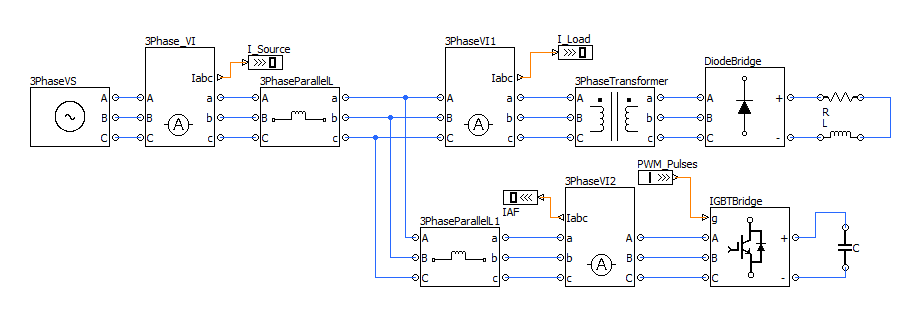- Subscribe to RSS Feed
- Mark Topic as New
- Mark Topic as Read
- Float this Topic for Current User
- Bookmark
- Subscribe
- Mute
- Printer Friendly Page
StarSim Aplication Example: Shunt Active Filter
09-27-2012 04:16 AM
- Mark as New
- Bookmark
- Subscribe
- Mute
- Subscribe to RSS Feed
- Permalink
- Report to a Moderator
This demo is used to illustrate the working principle of shunt active filter. Shunt active filter is a powerful device to reduce the harmonic pollution generated by nonlinear loads, such as the rectifier. The rectifier currents are rectangle type waveforms which contain a lot of harmonics.
The shunt active filter measures load currents, grid-connection point currents, and its own currents. It syntheses (filters) the desired clean current waveform out of polluted load currents, the difference between the desired clean waveform and the load current is the compensation current which the shunt active needs to generate. The shunt active filter generates this compensation current by accurately control the on/off of power electronics switches. The hysteresis current control strategy is adopted in this demo to achieve this goal.
The picture below shows the circuit topology of this demo. The 2-level diode bridge is used to model the rectifier load. The 2-level IGBT converter is the active filter.

The picture below shows simulation results. After enabling the active filter, the source current changes from the harmonic polluted (rectangle type) waveforms to the grid-friendly sinusoid type waveforms.

Kevin Wang | kevin.wang@modeling-tech.com
R&D Director
ModelingTech Energy Technology Company
